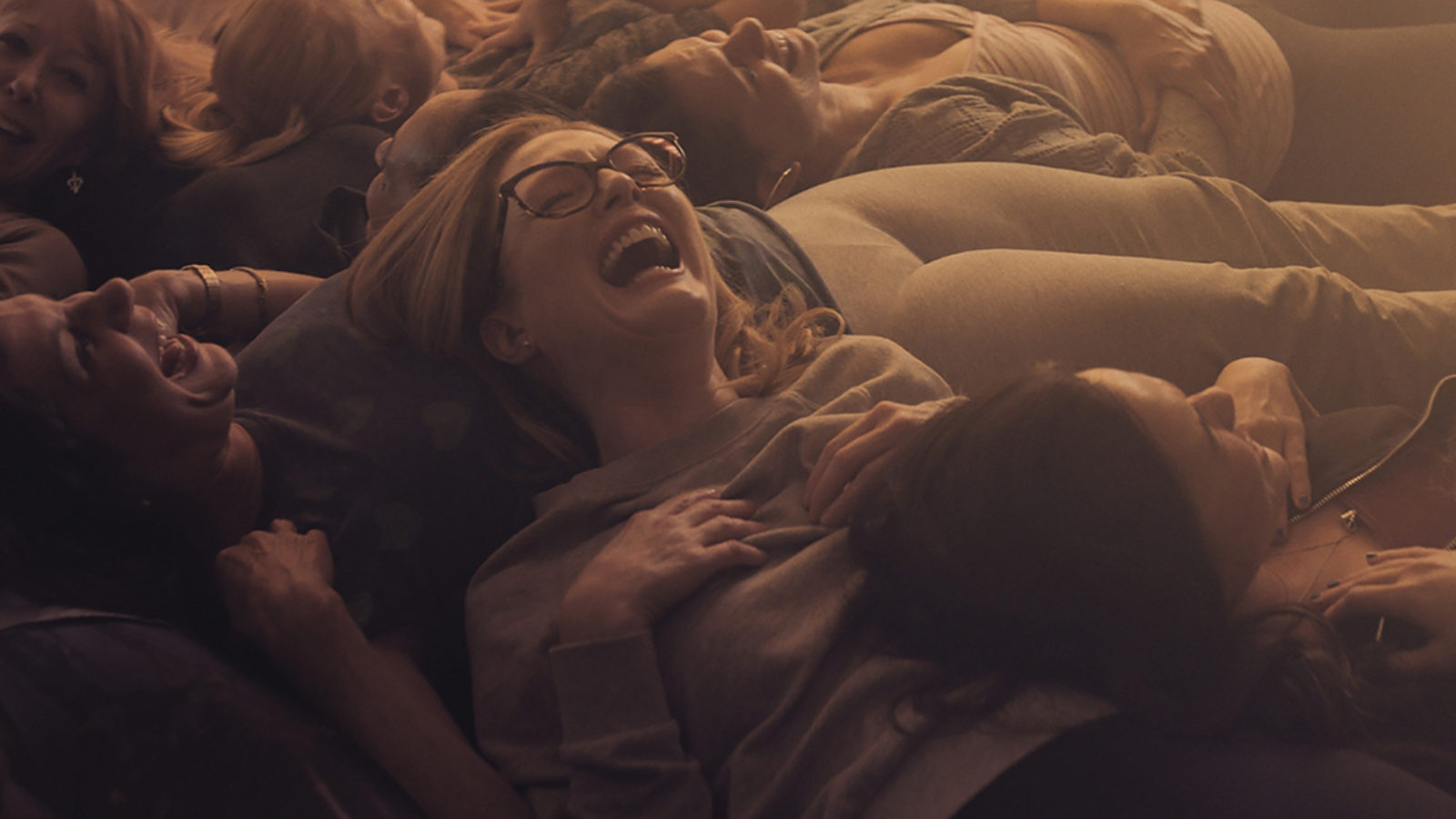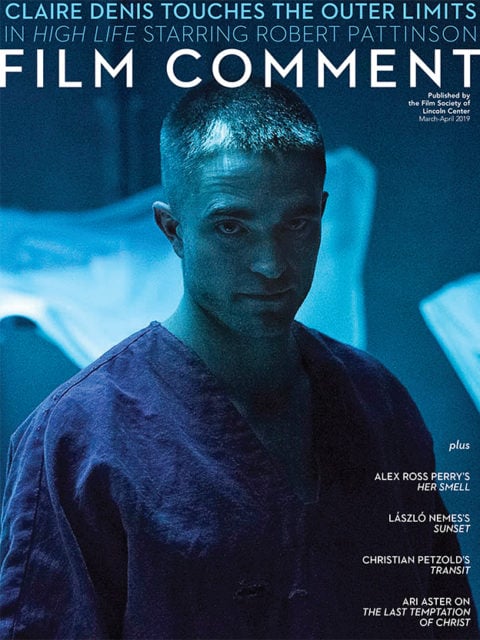
The Big Screen: Gloria Bell
In a dance-club floor crowded with middle-aged singles, a woman wearing owlish spectacles bobs and sways. The song is a love lament, but the tempo is upbeat. She catches the eye of a fellow dancer. “You look happy,” he says, approaching her. There’s something in her face, her expression that’s magnetized him. She doesn’t answer right away. Then, “Sometimes I am,” she says, and still thinking, adds, “sometimes I’m sad.” Another pause. “Like everybody.” This is Gloria, the sublimely ordinary heroine of two films, both by Sebastián Lelio.

The original Gloria, starring Paulina García came out in 2013 and charmed critics and audiences alike. And now at the instigation of Julianne Moore, who wanted to play the lead, Lelio has come out with an American version set in Los Angeles (the other was in Santiago). Although Lelio’s co-screenwriter (Alice Johnson Boher) is different, Gloria Bell is more transposition than adaptation, an almost scene-for-scene, shot-for-shot duplicate that follows its heroine through a variety of crises, accompanied by a soundtrack of pop hits and ballads that function almost as a character in the film, a choral correlative to Gloria’s inner life. There is a kind of daring in the film’s very modesty, in Lelio’s decision to forego the thrills of melodrama and the lure of glamour to follow an unexceptional woman, a divorcee, through the peaks and valleys of her days—gentlepeaks, and valleys that wound her pride but never crush her spirit.
Gloria has a mother (Holland Taylor), two grown children (Michael Cera and Caren Pistorius, both excellent), and for a while a playmate/lover, the aforementioned dancing Galahad. The recently divorced Arnold (John Turturro) is an ex–Navy man who owns an amusement park. At first he seems the ideal playmate for the ever-game Gloria. He takes her bungee jumping and teaches her paintball, a stunt at which she proves ominously skilled. Her accuracy with the air gun will come in handy in a deliciously comic payback.

We’ve grown more accustomed to women exercising their sexual appetites on the screen (think of Juliette Binoche in Claire Denis’s Let the Sunshine In), not to mention the spectacle of aging stars—though I won’t hold my breath waiting for geezer-babe versions of The Old (Wo)man and the Gun or The Mule. But does that include the wildly unexpected first sexual encounter between Gloria and Arnold, when, his shirt removed, we see he is encased a truss? (he’s had gastric bypass surgery but once weighed 240 pounds.) This revelation is quickly followed by the sound of ripping Velcro as the imperturbable and aroused Gloria removes the corset! There’s something mortifyingly funny but also symbolic in this image of an aspiring swinger, newly single, constricted more than he knows. And there’s an enchanting recklessness in the actors’ willingness to expose themselves, both spiritually and literally, in the carnal commingling of bodies no longer buff, but rapturous with desire.
Between the two actresses in the two versions, I would say that the risk is greater for Moore, who’s had more of a traditional (and international) movie-star career, except that there is nothing “traditional” about Moore, who has always preferred to live on the professional edge, playing borderline characters—porn star (Boogie Nights), mean mother (What Maisie Knew), Alzheimer’s victim (Still Alice), or downright depraved (the incestuous parent in Savage Grace). I should also add that even aging and makeup-less, Moore’s glamour can’t quite be hidden. This may be why Lelio’s one stylistic flourish in the original—bathing García (clothes, backgrounds) in royal purple—is abandoned here, as he maintains a neutral palette for Moore.
My one quibble lies in the context—the vagueness of Gloria Bell’s milieu. García seems more grounded, more indigenous to her (Chilean) setting, than does Moore, who inhabits a kind of amorphous Los Angeles. Gloria One’s friends and family, and her political debates, have an organic quality as occurs in a more hidebound society, whereas Gloria Bell floats free of any socioeconomic roots. Taylor is such an elegant (even well-heeled-looking) mother, is Gloria a college graduate? She tries weed. Has she ever had it before? Friends suggest a bohemian circle, but her job points the other way. Would this woman, on a trip to Vegas, really think Caesar’s Palace beautiful? The term “middle-class” is almost too elastic for citizens of the dis-united states; we require referents to “place” a character, to understand how their tastes and appetites were formed.
Yet Gloria Bell is finally a distinctive emblem of a single woman triumphantly navigating middle age. She hums and her spirit dances even when she’s driving down the freeway, the sadness and loss embodied in the lyrics contradicted by the ebullience of the music—a perfect rendering of the sometimes sad-sometimes happy in-betweenness of life. Lelio has made something of a subspecialty of liminal states, having directed the fine transgender film A Fantastic Woman. Here the in-betweenness is middle age itself, seen as a long potentially fertile period between youth and old age. There are Sirkian moments of loneliness and yearning when Gloria interacts with her two adult children: they always give her a little less than she wants—time, love—while she gives them more, or pleads to give them more, than they can accommodate. The youth represented by Gloria’s children is already giving way to the next generation, and a prevision of death occurs in the appearance of a skeleton puppet on a crowded sidewalk: Gloria stands transfixed, charmed and spooked in equal parts.
The real Sirkian family, though, is Arnold’s: Turturro’s character is a father with two grown daughters still living at home. While Gloria takes Arnold to her son’s birthday party and introduces him to her ex and the rest of her family, he keeps her at bay, refusing to tell his daughters about the relationship. Utterly dependent on their father, they constantly call him with crises, demanding his help, and while he seems genuinely annoyed, he never turns off his phone. He purports to want to live his own life, but clings as desperately as his daughters to this unhealthy mutual bond.
At one point, after lovemaking, Gloria refers to an article she’s read about how our bodies are constantly changing, our cells dying and being replaced in an endless process of transformation. Transformations constitute a perennial theme of Hollywood love stories, sometimes quite literally in the classic woman’s film: the one where the heroine starts out plain or ugly and winds up beautiful (see Dorothy McGuire in The Enchanted Cottage [1945]; A Woman’s Face twice, with Joan Crawford [1941] eclipsing Ingrid Bergman’s 1938 version; or Bette Davis in Now, Voyager (1942). Sometimes the metamorphosis is effected by a man’s love, sometimes by a surgeon’s knife (though wielded with love), always by the makeup department. That hasn’t changed, but nowadays it tends to go in the opposite direction, beauty into beast: Charlize Theron in Monster, Nicole Kidman in Destroyer. In Gloria and Gloria Bell, transformations occur, but at the cellular level, and with virtually no help at all from make-up. It is Lelio’s and Moore’s accomplishment to make us feel these ever-so-delicate epiphanies, the way music enters our bodies and changes who we are.
“You’re always on the run now,” goes the Laura Branigan song, “Gloria,” which has been used in so many movies, but never quite so aptly and rousingly than as in this film’s denouement. At a friend’s wedding, Julianne Moore moves slowly at first, then faster, at one with the song. You want to rise and cheer her unspoken anthem: This is who I am.
Molly Haskell has written for many publications, including The Village Voice, The New York Times, Ms., Saturday Review, and Vogue. She is the author of Steven Spielberg: A Life in Films and From Reverence to Rape: The Treatment of Women in the Movies.







